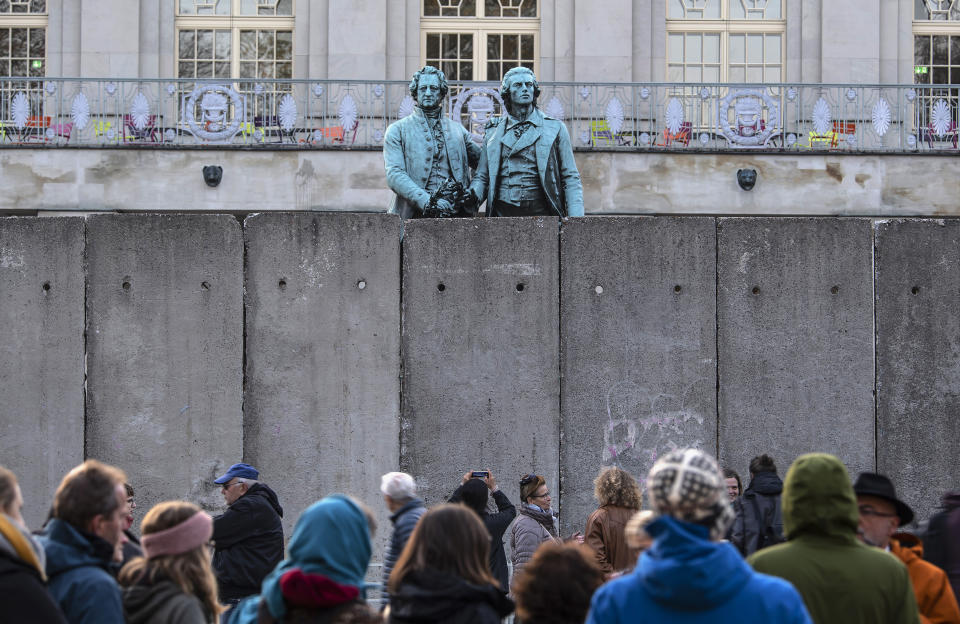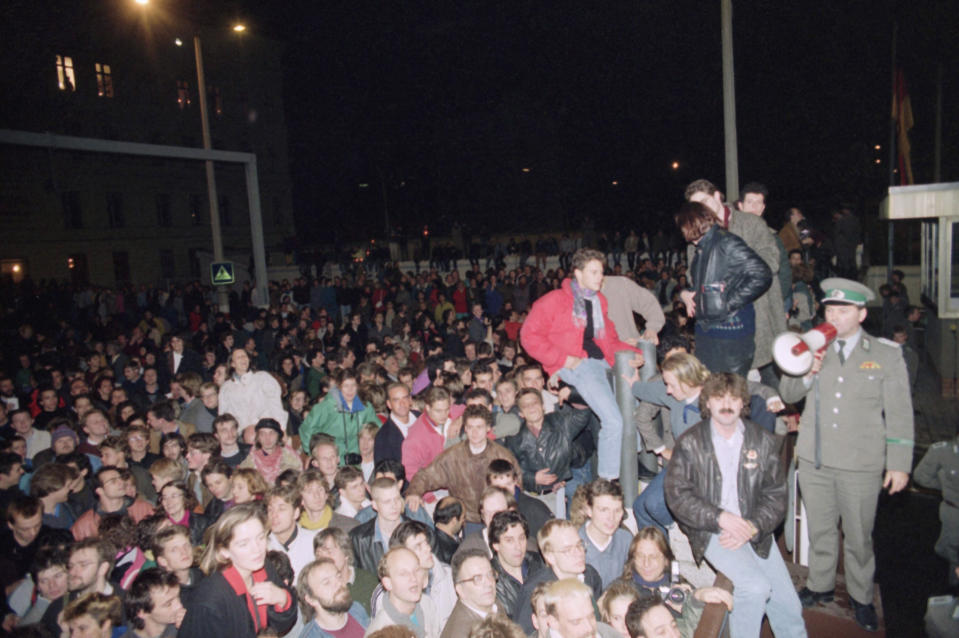The fall of the Berlin Wall: Google Doodle marks historic moment 30 years on

By Charlie Duffield
On the evening of November 9, 1989 crowds gathered at the Berlin Wall and shouted “Tor auf!” (“Open the gate!”)
For generations the Berlin Wall was symbolic of the ideological split across Europe.
It was erected on August 13, 1961, and was actually constructed as two walls, with the heavily patrolled “Death Strip” in between. This was a 160 yards wide zone containing hundreds of watchtowers, miles of anti-vehicle trenches, guard dogs, floodlights and trip-wire machine guns.
The 27-mile barrier tore friends and families apart and facilitated 28 years of travel restrictions between East and West Germany.
More than 100 people died trying to cross it, and 5000 defectors successfully escaped over or under it.

Today’s Google Doodle is designed by Berlin-based guest artist Max Guther to commemorate the 30th anniversary of the fall of the Berlin Wall; the moment which simultaneously signalled the end of the Cold War and start of German reunification.
People across Germany are today commemorating the 30th anniversary of the fall of the Berlin Wall.
Read more: A polarised Germany marks 30 years since Berlin Wall fell
How did the Berlin Wall fall?
The fall of the Berlin Wall was an accident, although the winds of change were blowing across Europe with new leadership in Russia, Poland and Hungary.
At a press conference on the evening of November 9, 1989, East German politburo member Günter Schabowski hastily said that restrictions on travel visas would be lifted. When asked when the new policy would begin, he said, “Immediately, without delay.”
Within a few hours a huge crowd congregated at the wall and outnumbered the border crossing guards.
The policy was in fact meant to be announced the following day, and would still have required East Germans to undertake a laborious visa application process.
At the Bornholmer Street checkpoint, the chief officer on duty Harald Jäger, faced an enormous mob of frustrated East Berliners. Just before midnight the overwhelmed officer defied his superiors and opened the border crossing on his own.

Over the next couple of days, 2 million ecstatic Germans crossed the border, and sang, danced and toasted the beginnings of a new era.
Others started to physically dismantle the wall, which was made of barbed wire and concrete.
The demolition of the Berlin Wall spurred several events that led to the reunion of the Federal Republic of Germany and the German Democratic Republic.
Read more: The Berlin Wall then and now - in pictures
Google Doodle artist’s thoughts on the Berlin Wall
For Google Doodle artist Max Guther, the fall of the Berlin Wall is not only a vital moment in German and European history, but of deep impact to him personally.
He said: “I hope that there will never be another moment that I or anyone else has to live in a country with border walls locking people inside or keeping people outside.”
Mr Guther was inspired by stories and old photographs of his parents who were in Berlin 30 years ago, and witnessed the fall of the wall themselves.
When asked what message he wanted his Doodle to impart, he said: “I hope that people start fighting border walls all over the world, helping people living in divided or separated countries, and giving refuge to those fleeing their home countries because they have no choice.”

 Yahoo News
Yahoo News 
